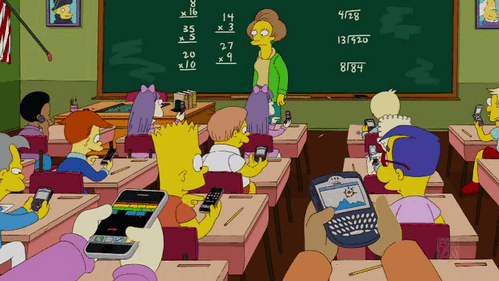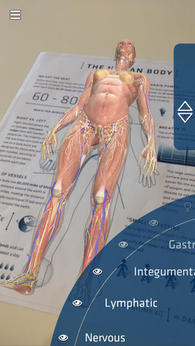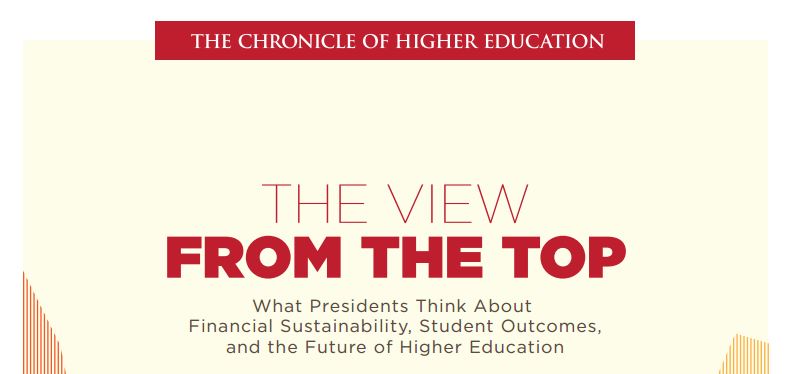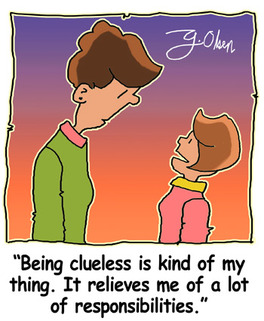 1. What are some things you feel you do well? Think about the talents you already know you have, and ask friends and family what they think you’re good at. You might be surprised by what they say. 2. What challenges you? The things that challenge you might be opportunities to improve and move toward your goals — and they might suggest areas of study and work that will keep you interested long into the future. 3. What do you like to do for fun? Think about the reasons you enjoy your favorite activities, the things they have in common and the strengths they bring out in you. 4. Who do you look up to? The people you admire — whether they’re celebrities, historical figures or people you know personally — can tell you something about who you are and what you value. Consider what it is about them you like and whether those qualities are worth reaching for. 5. What’s something you’ve always wanted to try? Consider your reasons for wanting to do this — and why it is you haven’t done this yet. Do you find it exciting? What do you expect to get out of it? 6. What accomplishment has made you most proud? Your answer might have nothing to do with a hard-won A or a trophy — it might be the time you stuck up for someone who needed your help. What you’re proud of can help you see what matters most to you. 7. What’s your favorite class? Don’t limit yourself to the subjects that come easiest to you. Think about which classes make you lose track of time. Is it the teacher or the subject matter that holds your interest? 8. What do you read about in your free time? The kinds of stories you follow in the news, your favorite books and websites — these can help you figure out what really makes you curious. 9. If you could do any job for a day, what would it be? Think about which careers you want to try on. What is it about them you find so appealing? What would you change to make them fit you better? 10. As a kid, what did you want to be when you grew up? Even if your childhood dreams seem silly now, remembering them may show you what’s always been important to you.
0 Comments
As mobile technology has become more widespread, however, some instructors have begun to include texting or digital technology in their lesson plans, which begs the question: Is it still distracting to students? Can students reply to and send messages about class content without being distracted?
A new study by J.H. Kuznekoff, et. al., examines these questions. The researchers tested students using mobile devices in class to respond to messages that were related or unrelated to classroom material; additionally, the researchers varied the form of the messages (responding to another message or composing an original one) and the frequency of the texts. Their results are compiled in the article "Mobile Phones in the Classroom: Examining the Effects of Texting, Twitter, and Message Content on Student Learning." Students who replied to messages relevant to class material scored higher on multiple choice tests than students who replied to messages that were unrelated to the class. The study authors conclude from this that "sending or receiving relevant messages may allow students to engage in similar processes as those that occur during note-taking. Specifically, relevant messages may allow students to encode lecture content in a manner similar to the processes that occur during note-taking (Peverly et al., 2013)." The frequency of messaging was also found to be a factor in the interruption of learning: Students who tweeted or sent messages with higher frequency on content not related to the class took lower quality notes than those who tweeted less frequently on non-classroom related subjects. The first group also scored up to 17 percent lower than the control group on multiple-choice tests, evidence that engaging in messaging unrelated to the class hurts student learning. While many instructors assume that mobile devices interrupt learning processes in the classroom -- even when they are related to material being studied -- this research points to the value that such devices may impart. That said, the study suggests that texting about content external to the lesson, or texting at a very high frequency, can, indeed, interrupt learning. Jeffrey H. Kuznekoff, Stevie Munz, Scott Titsworth. Mobile Phones in the Classroom: Examining the Effects of Texting, Twitter, and Message Content on Student Learning. Communication Education, 2015; Through this free app and a simple printed image, Anatomy 4D transports students, teachers, medical professionals, and anyone who wants to learn about the body into an interactive 4D experience of human anatomy. Visually stunning and completely interactive, Anatomy 4D uses augmented reality and other cutting edge technologies to create the perfect vehicle for 21st century education.
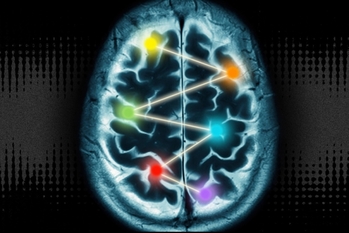 Researchers at MIT have proven that the brain’s cortex doesn’t process specific tasks in highly specialized modules — showing that the cortex is, in fact, quite dynamic when sharing information. Previous studies of the brain have depicted the cortex as a patchwork of function-specific regions. Parts of the visual cortex at the back of the brain, for instance, encode color and motion, while specific frontal and middle regions control more complex functions, such as decision-making. Neuroscientists have long criticized this view as too compartmentalized. In this new study, the researchers built an array of 108 electrodes that measured neural spikes in 2,694 sites across six cortical regions that are thought to control specific functions. Multiple cortical regions work together simultaneously to process sensorimotor information — sensory input coupled with related actions — despite their predetermined specialized roles. “Some areas may process motion more than color, some may process color more than motion, and sometimes you can see the information rising up in one area before the other,” Miller says. “But generally information is distributed all over the cortex.” Of particular note, Miller adds, was how widely the executive “choice” signals — deciding which direction to move their eyes — were distributed across the cortex. Previously, it was thought that decisions rise solely in specific cortical areas. “But you see the decision percolating up all over many parts of the cortex simultaneously, so even decision-making is more of an emerging property of many cortical areas,” he says. In providing a better understanding of the cortex’s sensorimotor processing, Miller says, the study may open doors for broader use of noninvasive treatments for stroke recovery, which deliver electrical pulses to increase brain waves in damaged cortical areas to restore sensory or motor functions.  The study, published Friday in the Journal of Family Psychology, focused on siblings and academic achievement. Jensen and co-author Susan McHale from Penn State looked at 388 teenage first- and second-born siblings and their parents from 17 school districts in a northeastern state. The researchers asked the parents which sibling was better in school. The majority of parents thought that the firstborn was better, although on average; siblings' achievement was pretty similar. Parents' beliefs about sibling differences weren't influenced by past grades, but future grades by the teenagers were influenced by the parents' beliefs. The child parents believed was smarter tended to do better in the future. The child parents believed was less capable tended to do relatively poorer the next year. Specifically, that belief translated to a 0.21 difference in GPA among study participants. 'That may not sound like much,' Jensen said. 'But over time those small effects have the potential to turn into siblings who are quite different from one another.'  "Teachers need to understand that providing supportive material in advance can make a big difference in helping students grasp and lock in key concepts presented in a lecture," said study co-author Mark McDaniel, PhD, a professor of psychology in Arts & Sciences and co-director of the university's Center for Integrative Research on Cognition, Learning, and Education. In this study, 144 college undergraduates with no mechanical experience listened to spoken explanations of how key components of an automobile braking system work together to slow a car. Participants were divided into three groups, with some getting a blank sheet of notepaper, some getting bare-bones text outlines describing key concepts, and others getting more detailed overviews with embedded diagrams showing how brake shoes, drums and other parts fit together to complete the braking system. Based on research by Morton Ann Gernsbacher at the University of Wisconsin-Madison, Structure-Building Theory suggests deep comprehension requires a two-step process in which learners must first identify and understand key terms and concepts and then grasp how these pieces fit together into a cohesive framework. According to a new Harris Poll, perceived levels of respect between these parties is down - dramatically so in many cases - in comparison to what Americans recall from their own K-12 experiences. While nearly four in five Americans (79%) believe students respected teachers when they were in school, that number has plummeted 48 points, with only 31% believing students respect teachers today. These are some of the results of The Harris Poll® of 2,250 adults surveyed online between November 13 and 18, 2013.
An extensive survey of college and university presidents, conducted by The Chronicle of Higher Education in January 2015, EXECUTIVE SUMMARY found that two-thirds of them feel that American higher education is going in the wrong direction, with public college leaders worried about the decline of state financial support and leaders of private institutions most concerned with the intense competition for students. The survey, completed by nearly 400 presidents at four-year colleges, focused on their attitudes about financial sustainability, college rankings, and student outcomes.
|
Disclaimer: This website is for informational and educational purposes.
Any and all blog content represents a synthesis of empirical information found on the internet, of my own personal opinions, and my professional experiences. Nothing posted reflects or should be considered professional advice. Interaction with me via the blog does not constitute a professional or therapeutic relationship. For professional and customized advice, you should seek the services of a licensed mental healthcare professional. I do not assume liability for any portion or content of material on the blog and accept no liability for damage or injury resulting from your decision to interact with the website. Archives
August 2022
Categories
All
|
